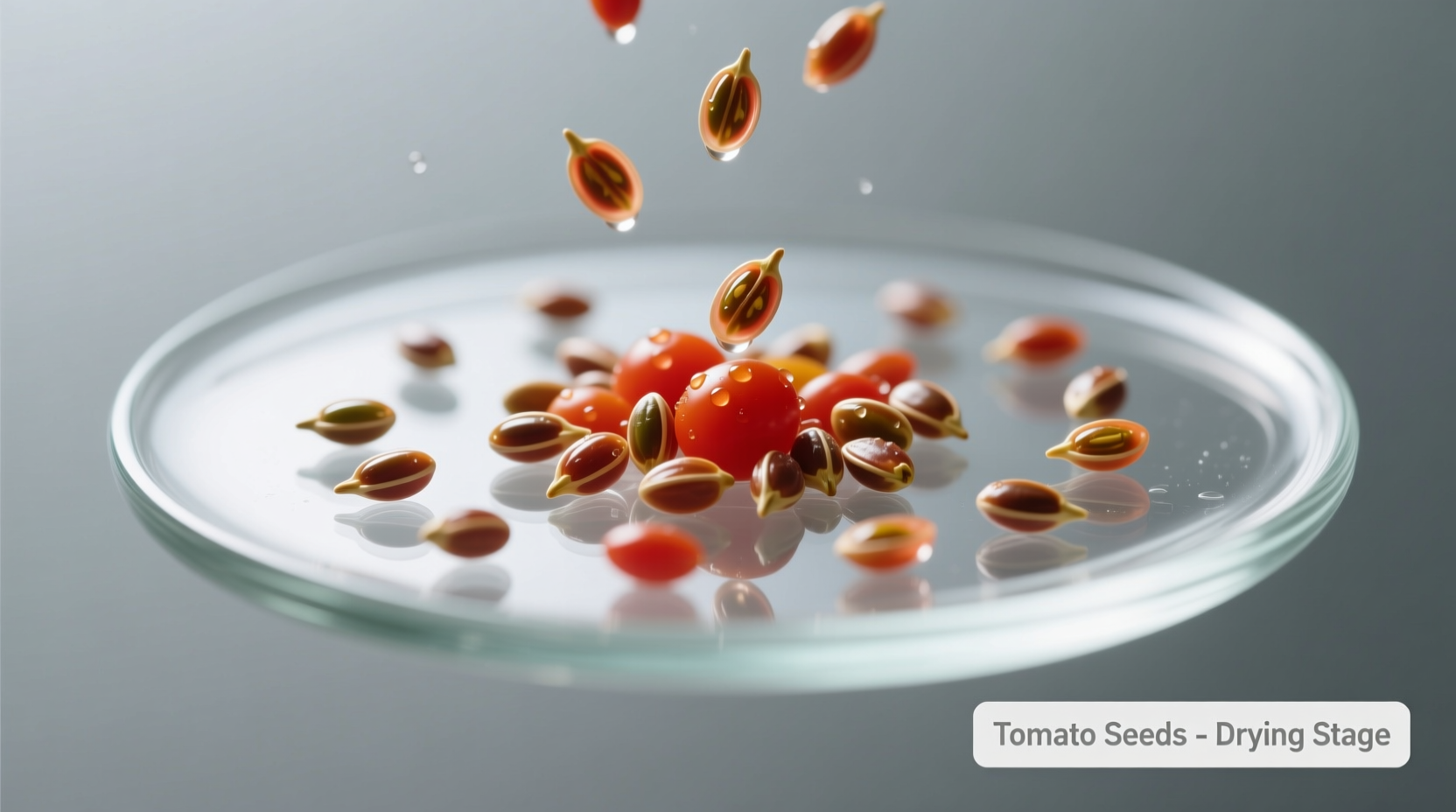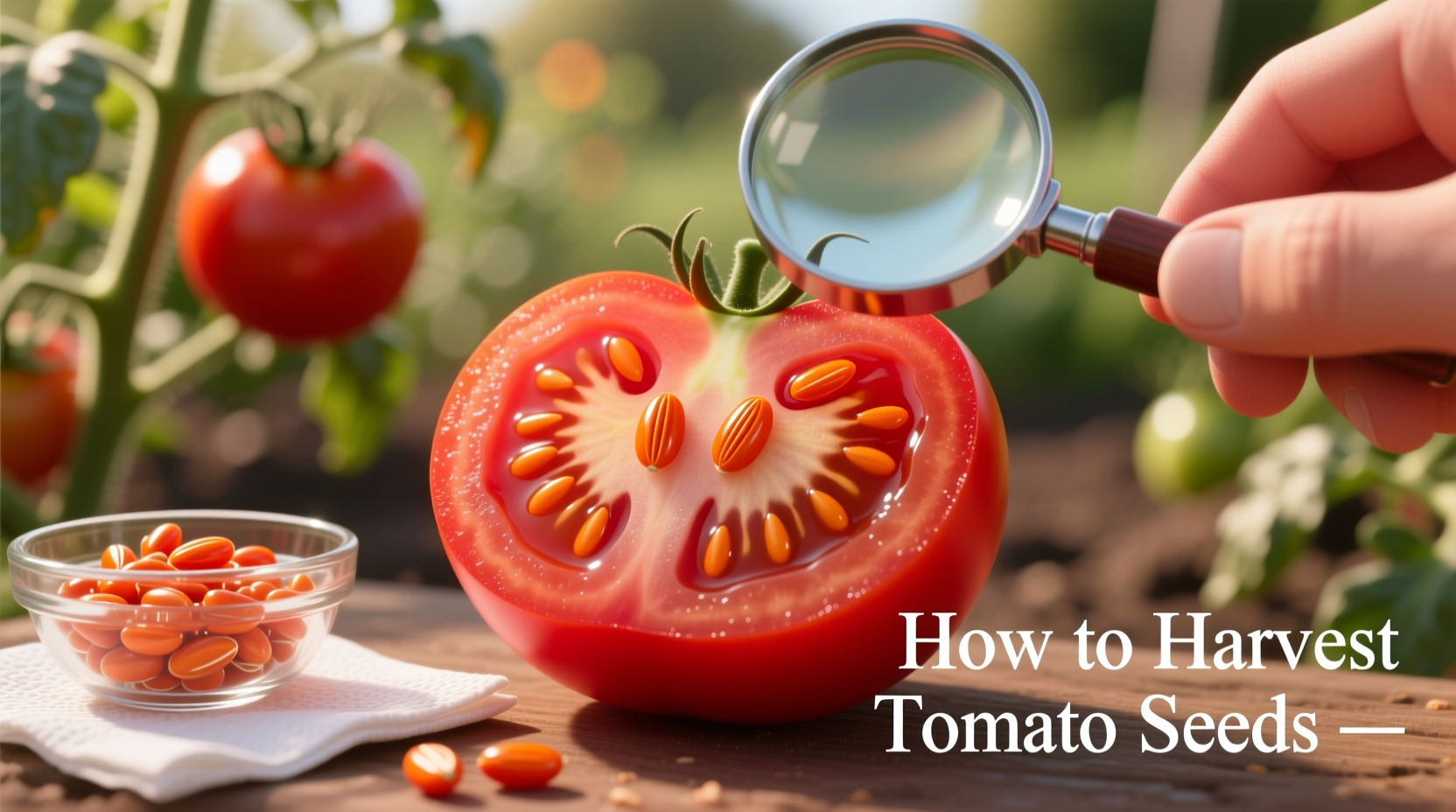Preserving your favorite tomato varieties through seed saving connects you to centuries of gardening tradition while ensuring garden sustainability. This comprehensive guide reveals professional techniques that home gardeners can use to harvest tomato seeds with maximum viability—no special equipment required. You'll learn exactly when to harvest, how to properly ferment seeds for disease resistance, and storage methods that maintain 90%+ germination rates for future planting seasons.
Why Harvest Your Own Tomato Seeds?
Commercial seed packets cost $3-$5 each, while harvesting your own seeds transforms garden surplus into next year's bounty. Heirloom tomato varieties—unlike hybrids—produce offspring identical to the parent plant, preserving unique flavors and characteristics. According to the University of Minnesota Extension, properly saved heirloom seeds maintain 85-95% germination rates for 4-6 years when stored correctly, compared to 60-70% for improperly handled seeds.
Timing Your Harvest for Maximum Viability
Harvest seeds only from fully ripe, disease-free tomatoes at the end of the growing season. The UC Davis Master Gardeners emphasize that underripe tomatoes yield immature seeds with poor germination. Look for these ripeness indicators:
- Deep, uniform color specific to the variety
- Slight softness when gently squeezed
- Natural separation from the vine with light pressure
- Fully developed flavor (taste test one)
Avoid saving seeds from hybrid varieties (labeled F1), as their offspring won't resemble the parent plant. Heirloom varieties like 'Brandywine', 'Cherokee Purple', and 'San Marzano' reliably produce true-to-type plants.
| Tomato Variety | Best for Seed Saving? | Germination Rate | Special Considerations |
|---|---|---|---|
| Heirloom (Brandywine) | Excellent | 90-95% | Isolate from other varieties |
| Cherry Tomatoes | Good | 85-90% | Multiple seeds per fruit |
| Hybrid (Early Girl) | Poor | Variable | Offspring differ from parent |
| Determinate Types | Fair | 80-85% | Shorter growing season |
Your Seed Harvesting Toolkit
You likely already have everything needed for successful tomato seed harvesting:
- Sharp knife - For clean tomato slicing
- Small bowls - Glass or ceramic works best for fermentation
- Wooden spoon or popsicle stick - For stirring
- Mesh strainer - Fine mesh prevents seed loss
- Paper plates or glass dishes - For drying (avoid paper towels)
- Labels and pen - Critical for variety identification
Step-by-Step Seed Harvesting Process
1. Select and Prepare Tomatoes
Choose 2-3 perfectly ripe tomatoes from your healthiest plants. Cut horizontally across the equator to expose the seed cavities. Gently squeeze or scrape seeds and surrounding gel into your fermentation container using a spoon.
2. The Critical Fermentation Process
This 48-72 hour process mimics natural decomposition, removing the germination-inhibiting gel coating and eliminating weak seeds:
- Add ¼ cup water per tomato to the seed mixture
- Cover loosely with cheesecloth or paper towel
- Store at room temperature (68-75°F / 20-24°C)
- Stir daily to introduce oxygen
- Stop when mold forms on top and seeds sink
According to Cornell University's Gardening Resources, proper fermentation reduces seed-borne diseases by 70% compared to direct drying methods.
3. Rinsing and Cleaning
After fermentation, pour off mold and debris. Add fresh water, stir, and wait 30 seconds—viable seeds will sink while debris floats. Repeat until water runs clear. This simple density test ensures only the healthiest seeds are saved.
4. Drying Seeds Properly
Spread cleaned seeds in a single layer on glass or ceramic plates—never paper, which can stick to moist seeds. Place in a warm, well-ventilated area away from direct sunlight. Stir seeds twice daily for even drying. Properly dried seeds will snap cleanly when bent (not bend or crumble).
5. Storage for Maximum Longevity
Store completely dry seeds in labeled glass containers or moisture-proof envelopes. Include variety name, date, and any special notes. The optimal storage conditions per USDA Seed Storage Laboratory are:
- Temperature: 32-41°F (0-5°C)
- Relative humidity: 20-30%
- Darkness: Complete
- Air exposure: Minimal
Under these conditions, tomato seeds maintain 85%+ germination for 4-6 years. Adding silica gel packets to storage containers extends viability by absorbing residual moisture.
Avoid These Common Seed Saving Mistakes
Even experienced gardeners make these critical errors that compromise seed viability:
- Skipping fermentation - Leads to 30% lower germination rates
- Incomplete drying - Causes mold in storage (seeds must be brittle)
- Poor labeling - Results in lost varieties (use waterproof ink)
- Storing in plastic bags - Traps moisture causing premature germination
- Saving hybrid seeds - Produces unpredictable, often inferior plants
Troubleshooting Seed Saving Problems
Mold During Fermentation
White mold is normal and indicates healthy fermentation. Black or green mold suggests contamination—discard and restart with cleaner equipment. Always use non-chlorinated water, as chlorine inhibits the beneficial bacteria needed for proper fermentation.
Poor Germination Rates
If your saved seeds show low germination:
- Test viability by placing 10 seeds on damp paper towel in sealed bag
- Check for proper storage conditions (moisture is the #1 culprit)
- Ensure adequate fermentation time (minimum 48 hours)
- Verify seeds were fully mature when harvested
Advanced Seed Saving Techniques
For gardeners wanting to preserve rare varieties or improve seed quality:
- Cold stratification - Refrigerate seeds for 2 weeks before planting to boost germination
- Multi-year selection - Save seeds from your best 3-5 plants each year to develop locally adapted strains
- Isolation techniques - Use floating row covers to prevent cross-pollination between varieties
- Viability testing - Conduct annual germination tests to monitor seed quality
According to the Seed Savers Exchange, gardeners who implement these advanced techniques see 15-25% higher germination rates and plants better adapted to their specific growing conditions.

When NOT to Save Tomato Seeds
Understanding these limitations prevents wasted effort:
- Hybrid varieties - F1 hybrids won't produce true-to-type offspring
- Diseased plants - Diseases like tomato mosaic virus transmit through seeds
- Overly wet seasons - High humidity reduces seed quality
- Cross-pollinated plants - Without isolation, varieties may cross
The Royal Horticultural Society recommends against saving seeds from plants showing any disease symptoms, as pathogens can remain viable in seeds for multiple years.
Conclusion: Building Your Seed Legacy
Harvesting tomato seeds properly transforms your garden into a self-sustaining ecosystem. By following these science-backed techniques, you'll preserve heirloom varieties, reduce gardening costs, and develop plants uniquely adapted to your local conditions. The most successful seed savers treat each harvest as part of a multi-year improvement process—selecting seeds from their best performers each season creates increasingly resilient, productive plants. Start with just one or two varieties this season, perfect your technique, and soon you'll have a personalized seed collection that connects you to gardening traditions spanning centuries.
How long does it take to properly dry tomato seeds?
Tomato seeds require 5-7 days to dry completely in ideal conditions (70°F/21°C with 30-40% humidity). Seeds are fully dry when they snap cleanly when bent rather than bending or crumbling. In humid climates, drying may take 10-14 days—always verify dryness before storage to prevent mold.
Can I skip the fermentation step when saving tomato seeds?
While possible, skipping fermentation reduces germination rates by 25-30% and increases disease transmission risk. The fermentation process removes the germination-inhibiting gel coating and eliminates weak seeds through natural selection. For best results, always ferment tomato seeds for 48-72 hours at room temperature.
How can I prevent cross-pollination between different tomato varieties?
Maintain 10-15 feet between different varieties for basic separation. For complete isolation, use floating row covers during flowering or grow only one variety per season. Some heirloom varieties like 'Stupice' are particularly prone to cross-pollination and require greater separation distances than modern varieties.
What's the best way to test if my stored tomato seeds are still viable?
Conduct a simple germination test: place 10 seeds between damp paper towels in a sealed plastic bag. Keep at 70-80°F (21-27°C) for 7-10 days. Count sprouted seeds—8+ indicates excellent viability (80%+), 5-7 is acceptable (50-70%), and fewer than 5 suggests it's time to replace your seed stock.
Why shouldn't I save seeds from hybrid tomato plants?
Hybrid (F1) tomatoes are crosses between two distinct parent varieties. Their seeds produce plants with unpredictable characteristics—often inferior to either parent. You might get plants with poor fruit quality, disease susceptibility, or altered growth habits. For reliable results, save seeds only from open-pollinated or heirloom varieties.











 浙公网安备
33010002000092号
浙公网安备
33010002000092号 浙B2-20120091-4
浙B2-20120091-4